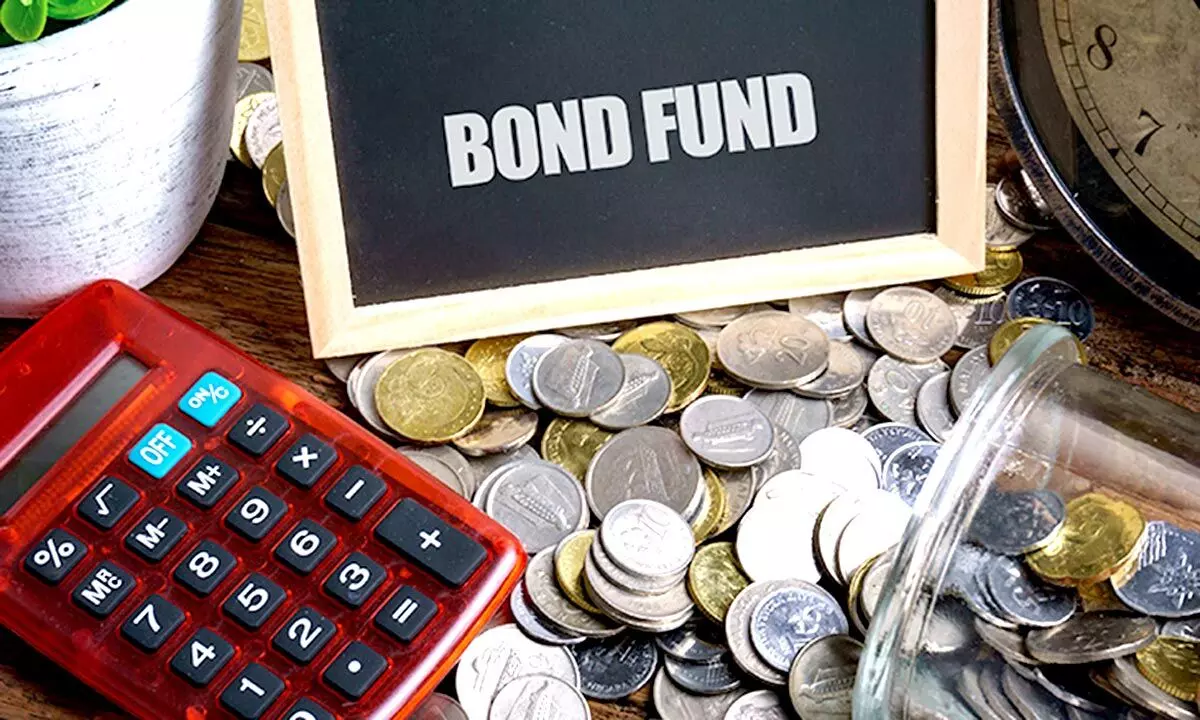Rate hikes: Worth to take the risk of reinvestment?
Banks are likely to extend raising deposit rates, while bond yields or money market rates may continue to rise giving debt fund managers enough teeth to generate higher returns
image for illustrative purpose

Go for shorter-duration bank fixed deposits. The benchmark rate will rise further prompting banks to offer higher rates on public deposits. Bank loans are picking up necessitating lenders to mobilise resources. They will vie each other to grab larger share of public deposits, always billed cheaper sources of funds
With the Reserve Bank of India (RBI) raising the benchmark rate you may be inundated with texts either enticing you to open bank term deposits or alluring for debt mutual fund (MF) plan. And you may be tempted enough to do so. Hold on! Don't jump the gun being swayed away.
The Reserve Bank of India raised the benchmark rate by 90 basis points collectively in May and June. The outsized increase in the repo, which is primarily aimed at taming inflation and in lockstep with global central banks has fanned speculation of another 75-100 basis points hikes in the rest of the financial year. The repo is the rate at which banks borrow short-term money from the central bank is now pegged at 4.90 per cent.
The Reserve Bank of India is set to announce its bi-monthly policy this Friday when it is reportedly expected to raise the rate by up to half a percentage point.
What stores for savers?
Good news. They can earn higher interest income from bank fixed deposits, bonds or any other fixed income investment. Beat the heat of rising consumer prices!
So lock in your money?
Not exactly! Go for shorter-duration bank fixed deposits. The benchmark rate will rise further prompting banks to offer higher rates on public deposits. Bank loans are picking up necessitating lenders to mobilise resources. They will vie each other to grab larger share of public deposits, always billed cheaper sources of funds.
This in turn will give you opportunities to enhance your interest income. Say, you have opened a fixed deposit for six month or above. Those may offer you 4.40-4.90 per cent at large public sector bank. When you reinvest the same money on maturities, the rates shall have increased further following raises in the RBI's repo rate.
Risk of reinvestment
It appears worth in a rising interest rate regime. A saver goes for shorter maturity deposit plans only to reinvest the sum at a higher rate on maturity. However, the same crimps your interest income in falling interest rate scenario.
What about mutual fund plans?
The same method is applied. An ultra-short duration fund is yielding 3.44 percent in the one-year time span, the same gauge will show higher rate of return later in the year whenever the RBI goes for higher repo rate rises.
When the central bank increases benchmark rate, it immediately percolates down to money market instruments where debt fund managers deploy their collections. This quintessentially enhances return potential in the ultra short-term debt portfolios.
How long should you cut the story short?
As long as interest rates are not peaked. The moment it reaches a peak in this particular cycle you go for a long-term fixed deposit like five-year or even seven year. This cycle could well be your last chance to earn higher rates.
With India's emerging economy expanding, rates should trend lower with likely higher GDP growth rate. Developed economies including US or Euro zone had had near zero or negative interest rates until December, 2020 when the stockpile of negative yielding debt surged to a record $18 trillion. The Russia-Ukraine war changed the dynamics drastically sending commodity prices higher.
Inflation versus savings
The global price spiral has hit India too, although Mint Road managed it well back home. The cost of living pinches your pocket as you are forking out extra pennies to buy daily articles.
So, you need to douse the fire of price rises with your interest income. Stock market is no more an option to overshadow the inflation demon this year at least with companies battling higher cost of funds and demand revival.
Savers need to be prudent to earn higher interest income. India printed about 7 percent consumer price rise in June coming down from a peak of 7.79 percent in April (eight-year high). This means, your target is to generate returns more than 7 percent translating the differential into savings.
Shortening the odds in favour of rate hikes and abating inflation
The Reserve Bank of India has been persistently aiming to control inflation via sharp rate hikes. It has yielded results in the past two months. A well progressing monsoon could further pave the way for the central bank cooling off prices.
Banks are likely to extend raising deposit rates while bond yields or money market rates may continue to rise giving debt fund managers enough teeth to generate higher returns. An upcoming festival season preludes to higher loan growth, a strong reason for lenders vying for higher share of public deposits. A saver needs to be mindful about the evolving scenarios.
Tag it with home loan
If you are running a home loan, it is doubling down to raise interest income. If your home loan rate is going up, so are your fixed deposit rates. Tenor is more crucial to consider than any promotional campaign.

